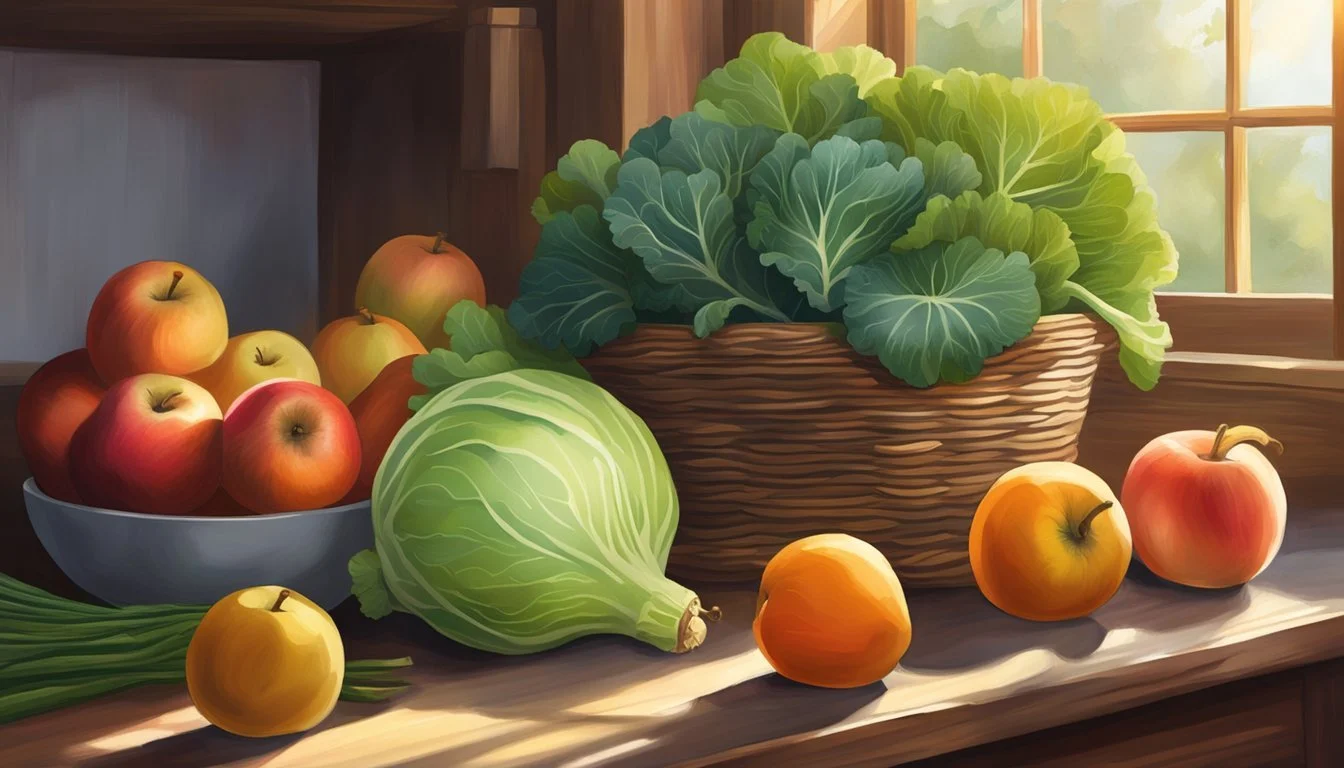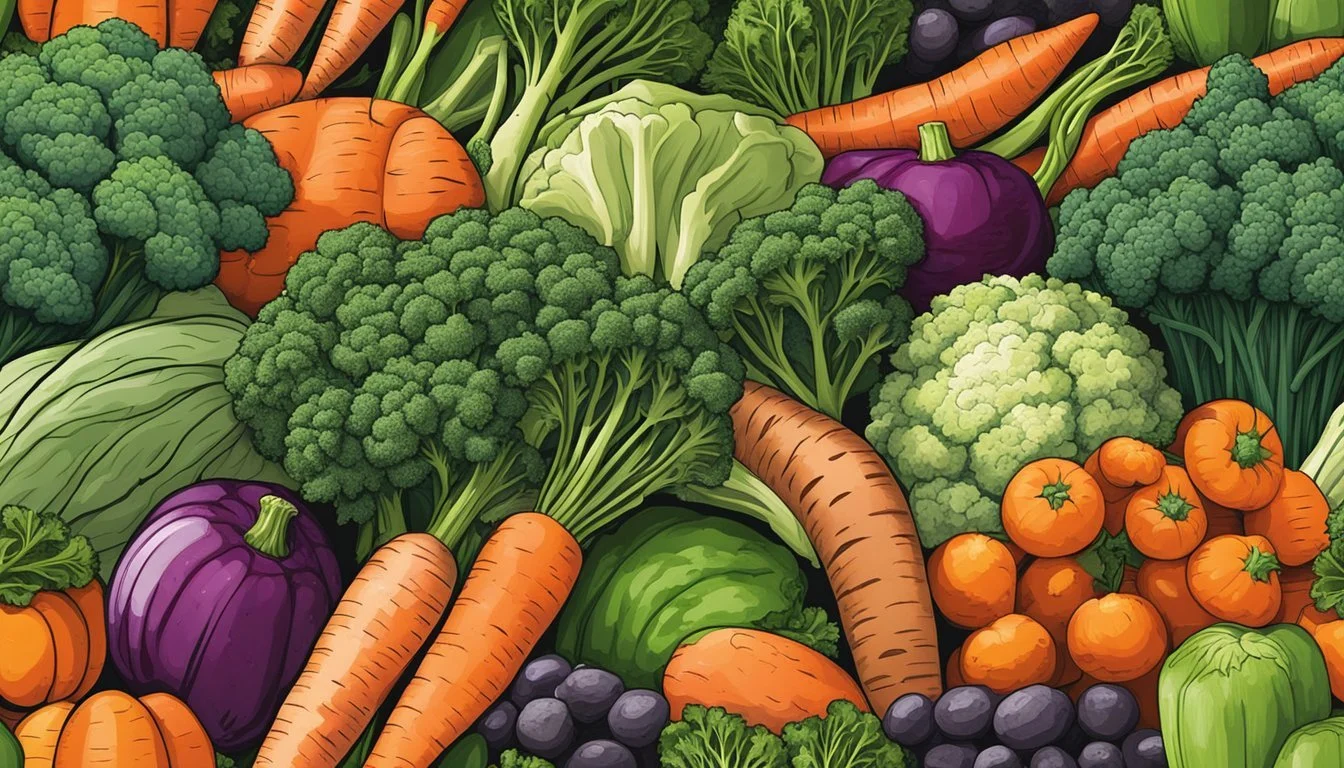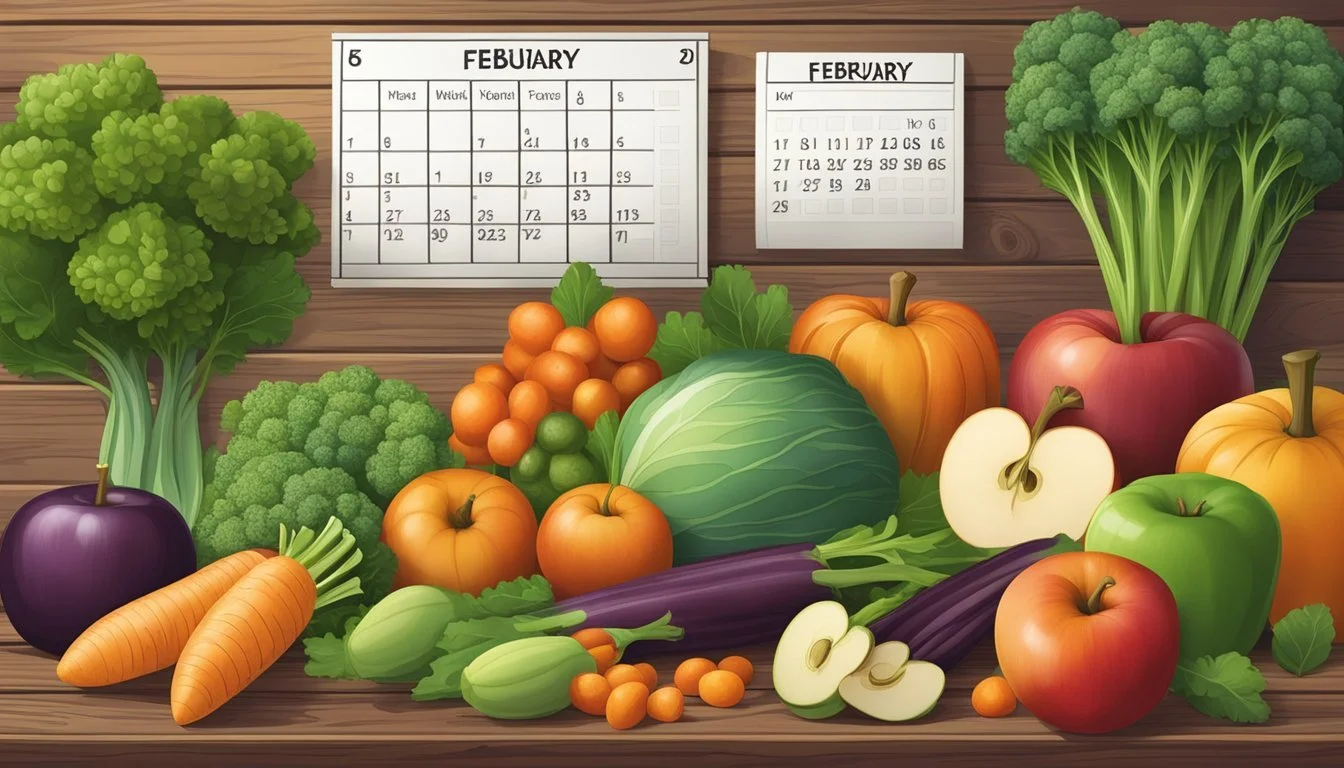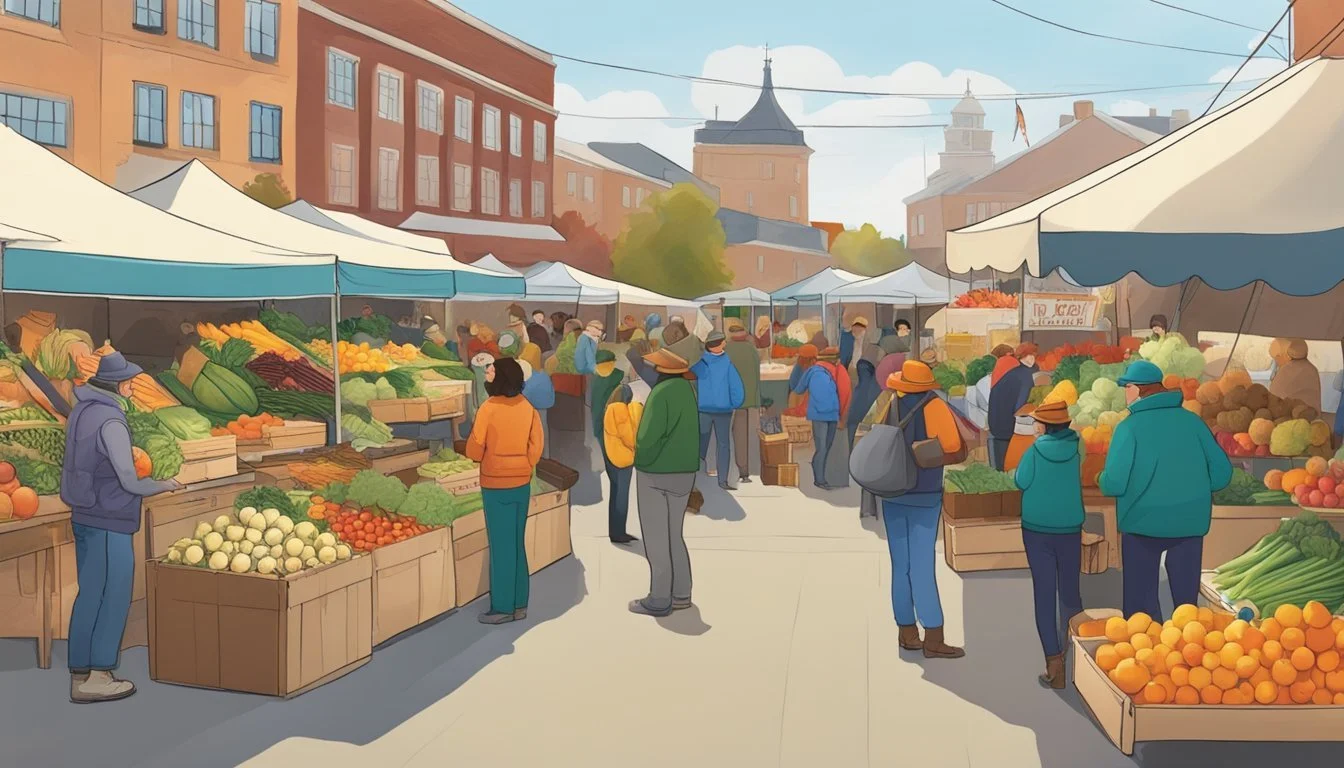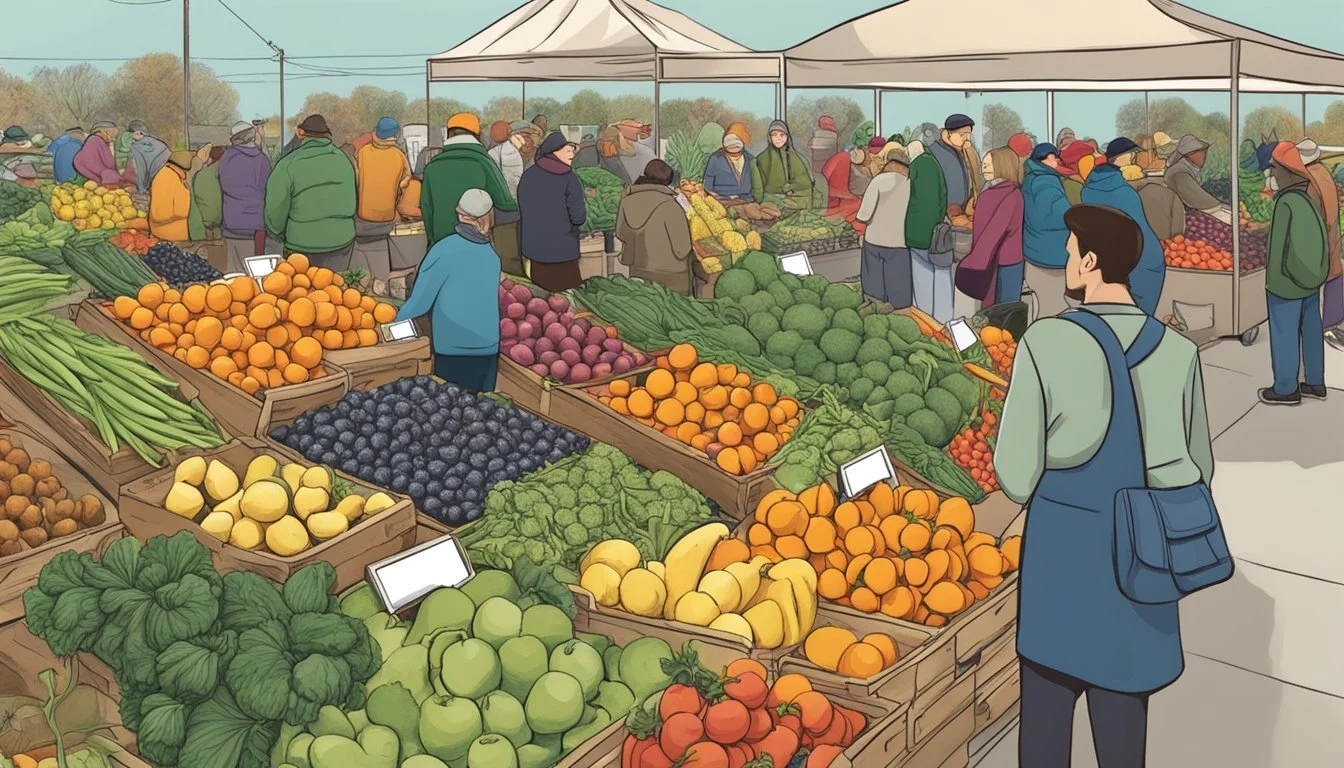Kansas Seasonal Fruit & Vegetables in February
Your Guide to Fresh Produce
This Article is Part of our Kansas Seasonal Fruit & Veg Calendar
February in Kansas presents a unique landscape for fruit (What wine goes well with fruit?) and vegetable availability. As winter continues its hold, the selection of fresh produce is largely drawn from hearty storage crops and greenhouse-grown varieties. Local farmers and markets focus on providing items that have been preserved from the previous growing season or those that can be cultivated in controlled environments. This ensures that even in the heart of winter, Kansas residents still have access to a range of nutritious produce.
Seasonal produce during this time includes a variety of root vegetables and certain fruits that store well in cooler conditions. Apples, a versatile fruit, are commonly available from storage, having been harvested in the fall and kept in conditions that maintain their crisp texture and flavor. On the vegetable front, options such as sweet potatoes and winter squashes reign supreme, offering both sustenance and a taste of comfort during the colder days.
For those looking for fresh greens, Kansas greenhouses yield a selection of leafy vegetables. While the outdoor fields lie dormant, these protected spaces enable growers to provide a steady supply of products like lettuces and sprouts. This is a testament to the ingenuity of local agriculture, adapting to the seasonal climate to ensure that fresh produce is accessible year-round.
Understanding Seasonal Produce
Selecting seasonal produce in February is both environmentally beneficial and can enhance one's culinary experience. Understand the impact of winter's unique climate on Kansas crops and discover the advantages of incorporating seasonal fruits and vegetables into one's diet.
Benefits of Eating Seasonally
Eating seasonally ensures individuals are getting fruits and vegetables at the peak of their freshness, which requires less transportation and storage, translating to less environmental impact and higher nutrient content. In February, eating seasonally also supports local farmers who cultivate crops suited to the climate conditions of Kansas winters.
February's Unique Climate Impacting Crops
Kansas in February experiences a winter climate that typically has cold temperatures and shorter days that affect the growth and harvest of produce. Despite these challenging conditions, Kansas farmers manage to harvest and provide storage crops and some hardy fresh produce. Seasonal produce in winter includes stored root vegetables and hearty greens that can withstand the colder weather.
Vegetables Available in February
In February, Kansas gardens primarily offer a selection of storage vegetables and hearty crops that can withstand the colder temperatures. Here's a look at what you can expect to find.
Root Vegetables
Parsnips: These creamy-white vegetables are at their best after the first frost, retaining a sweet, earthy flavor.
Carrots: Often sweeter after cold weather, carrots remain a staple in February harvests.
Turnips: Available from storage, turnips can be used in a variety of winter recipes.
Potatoes: A standby storage crop, potatoes maintain their quality throughout the winter months.
Leafy Greens
Cabbage: Cabbage stores well and is available fresh during this time.
Kale: Hardy and frost-resistant, kale can often be harvested into the winter.
Spinach: Although not as abundant, spinach grown in protected conditions can be available.
Winter Squashes
Butternut Squash: (how long does butternut squash last?) This type of winter squash is often available from storage and retains its sweet, nutty flavor.
Alliums
Onions: With proper storage, onions remain a versatile and available vegetable in February.
Leeks: Mild and hearty, leeks are typically harvested before heavy frosts and stored for winter use.
Fruits to Enjoy in February
February in Kansas offers a pared-back selection of fruits due to the wintery season. However, residents can still enjoy a variety of storage and citrus fruits during this period.
Storage Fruits
During February, Kansas's cold climate means that the fruit selection mainly consists of those that store well throughout the colder months. Apples are a staple, with varieties that have been kept in controlled storage since the autumn harvest still available and fresh. One can also find pears, another hearty fruit that holds up well in storage, maintaining their quality and flavor.
Apples: Available from storage; varieties can include Fuji, Gala, and Granny Smith.
Pears: Often found fresh thanks to their long storage life.
Citrus Fruits
Even though Kansas is not a citrus-growing state, the availability of these fruits peaks during the winter months due to imports from warmer climates. This is the time to enjoy a burst of tangy sweetness with a range of citrus:
Oranges: Sweet and juicy, they are a popular choice for snacking or juicing.
Grapefruits: Known for their slightly bitter taste, they are rich in vitamins and often eaten as a breakfast staple.
Lemons: Used for their zesty flavor in both culinary applications and beverages.
Citrus fruits brought in from other regions are abundant and provide a welcome variety to the local winter diet.
Kansas' Seasonal Recipes
In February, Kansas cooks turn local produce into warming meals and preserved delights that highlight the season's harvest.
Hearty Winter Salads
In Kansas, winter salads often feature robust greens such as kale and spinach. These leafy vegetables pair well with roasted root vegetables like turnips and carrots, which are plentiful in February. For a heartier dish, one might add roasted squash or sweet potatoes, garnishing with a light vinaigrette for a balance of flavors.
Warm Vegetable Soups
Soup enthusiasts can enjoy the warmth of pureed soups made with winter produce. Ingredients such as potatoes and carrots make the base for rich soups that are both filling and comforting. One might layer flavors by sautéing garlic and onions before blending into a smooth consistency.
Roasted Vegetables
Roasting brings out the natural sweetness in February's root vegetables. Simple preparations might involve tossing carrots, potatoes, and turnips with olive oil, salt, and pepper, roasting until they’re caramelized and tender. These can serve as an appetizing side dish or an enticing addition to a composed salad.
Preserving Techniques
When the winter bounty is plentiful, Kansas locals preserve their surplus harvest. Jams made from last autumn's fruits can be prepared and enjoyed. Salsas and pickles from stored produce like tomatoes and peppers from the previous season are commonly jarred, linking the taste of summer with winter meals.
Growing Your Own
In the heart of winter, Kansas gardeners can utilize indoor gardening to foster growth and prepare for the upcoming spring planting season. While outdoor gardening is limited, they can focus on starting seeds and planning.
Indoor Gardening Tips
Gardeners in Kansas can still engage with their passion for produce by cultivating herbs and select vegetables indoors. A south-facing window provides the most light, which is crucial for plant growth, though artificial grow lights can be a beneficial addition to combat the limited daylight hours of February. Here's a list of suitable herbs and plants for indoor gardening:
Herbs: Basil, Chives (how long do chives last?), Parsley, Cilantro
Plants: Microgreens, Lettuce, Spinach
These selections can thrive indoors and provide fresh produce, even during the colder months. It's critical to ensure proper drainage in containers and maintain a consistent watering schedule.
Preparing for the Spring Planting
As the tail-end of the Kansas winter approaches, it's wise to start planning for spring planting. Utilizing a calendar to plot out planting dates for spring crops will maximize the growing season. Some tasks for preparation include:
Equipment Check: Verify that tools and supplies are in good condition.
Soil Preparation: Begin acquiring compost or fertilizers needed to enrich the soil after the winter.
Seed Selection: Decide on the vegetables and fruits to grow, keeping in mind the Kansas climate and soil type.
Starting seeds indoors for crops like tomatoes, peppers, and other warm season vegetables can provide a jump-start to the growing season. Carefully monitoring the local frost dates is also necessary to ensure that tender plants aren't harmed by late cold snaps.
By following these guidelines, Kansas gardeners can make the most of February and enter the spring with healthy plants and a well-prepared garden.
Local Food Events in February
In Kansas, February is a time when the community celebrates the end of winter with events that highlight local and seasonal produce. The colder month still offers an exceptional variety of farm-fresh goods, which are showcased at several community gatherings and farmers markets.
Farmers Markets: They continue to operate, albeit with a focus on cold-weather crops and goods such as sweet potatoes and turnips—stored from autumn harvests—and high tunnel or greenhouse grown greens.
Winter Market Days: Hosted in various locations, these markets offer Kansas-grown produce along with meat, dairy, and baked goods.
Cooking Demonstrations: Local chefs often hold workshops and demonstrations, using February's seasonal produce to create warming and nutritious dishes that inspire community members to cook with local ingredients.
Food Festivals: Although less common in February due to the cold weather, one can occasionally find indoor festivals or events celebrating specific produce items that are characteristic of the late winter months. These may include:
Citrus Celebrations: Emphasizing the variety of citrus fruits available, such as blood oranges and grapefruits.
Educational Workshops: Extension services or local farming coalitions may offer sessions on topics like:
Seasonal Eating: Teaching about the benefits of eating seasonally for health and local economy.
Preservation Skills: Instruction on canning, fermenting, and storing seasonal produce to enjoy it year-round.
Residents are encouraged to support these events, as they not only foster a sense of community but also contribute to the sustainability of local farmers and producers by embracing the seasonal rhythm of agriculture in Kansas.
Buying Tips and Tricks
In the cooler month of February, selection and storage of seasonal produce in Kansas are paramount to enjoying flavorful fruits and vegetables. One must be strategic in finding the best local suppliers to ensure the freshest produce during this time.
Selecting the Best Produce
When shopping for produce in Kansas during February, consumers should focus on quality and freshness. Citrus fruits like lemons, limes, and oranges are at their peak and should feel heavy for their size, indicating juiciness. For storage crops like apples, look for firmness and absence of soft spots. Winter greenhouse-grown produce, such as lettuces and herbs, should appear vibrant and crisp without wilting.
Storing for Longevity
Proper storage can greatly extend the life of seasonal produce. Citrus fruits do well in a cool, well-ventilated area and can last for several weeks. Apples are best kept in a crisper drawer in the refrigerator to maintain their crispness. Other vegetables, if available, such as root crops like turnips, should be stored in a cool, dark place, preferably in a well-ventilated container to prevent moisture accumulation.
Finding Local Suppliers
To ensure one is purchasing the freshest seasonal produce, it's beneficial to identify and visit local farmers markets and farm stands. Kansas residents can utilize resources like the K-State Research and Extension Buying Guide for a comprehensive list of local markets. Additionally, shoppers are encouraged to establish relationships with local farmers which can lead to insights on crop availability and even upcoming seasonal produce.


